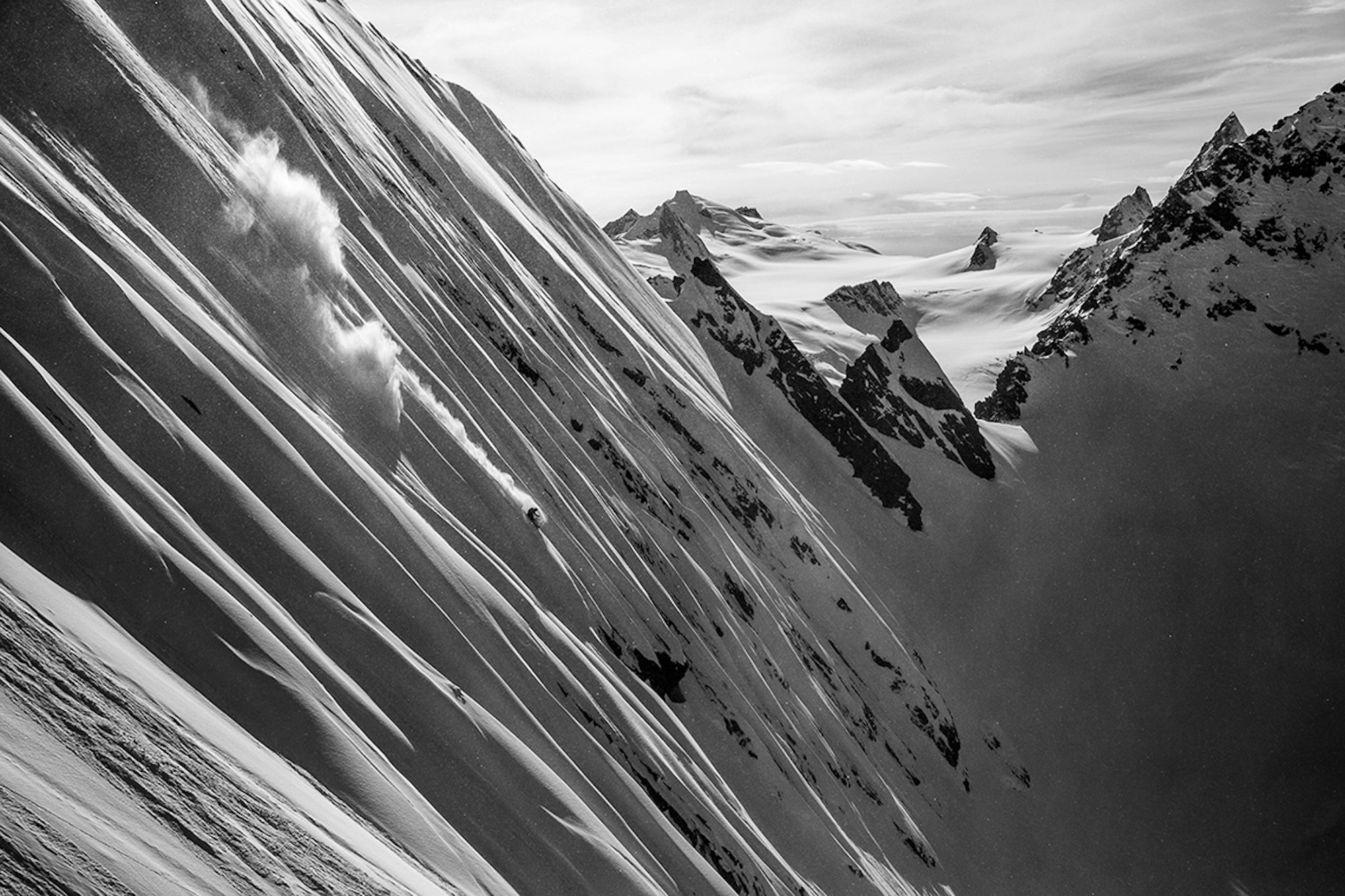Parkin Costain’s meteoric rise in freeskiing didn’t happen by accident, it’s what he was bred for
WORDS • Rob Pursell | PHOTOS • Will Wissman
From the outside looking in, Parkin Costain’s ascension to freeskiing fame might seem meteoric. Beginning in 2017, the Whitefish, Montana native has won the Quiksilver Young Guns contest, scored one of the breakout segments in TGR’s 2018 Far Out, turned pro for longtime-sponsor Line Skis and was subsequently poached by Black Diamond to join its pro team and competed amongst a stacked field in the Kings and Queens of Corbet’s. While he may not have won the Jackson-based contest, in true Costain fashion, he set the bar high, punting an interstellar backflip off the top, followed by another off the skier’s left jump inside the couloir which he almost put to his feet. No one was unaware of who Costain was after that.
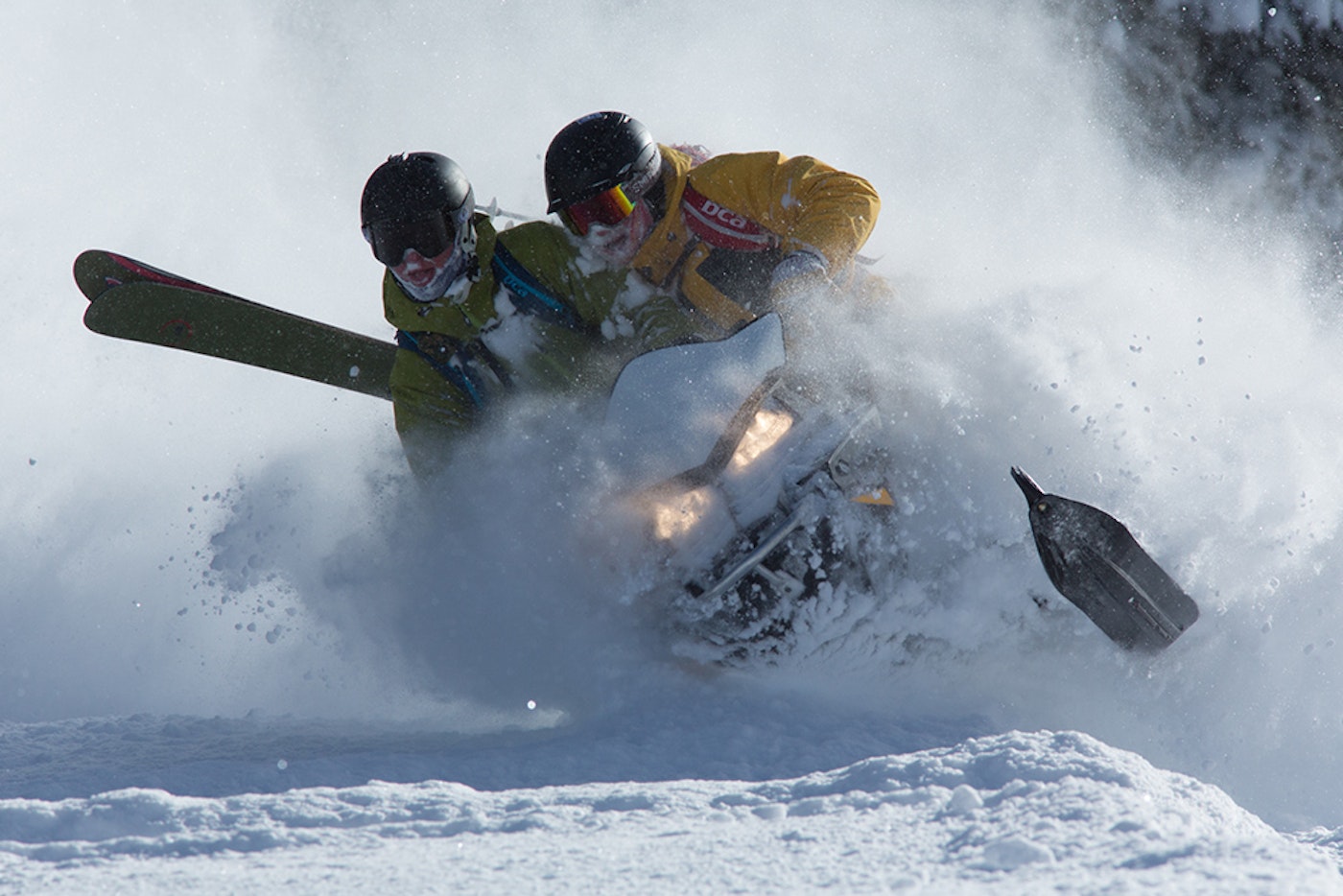
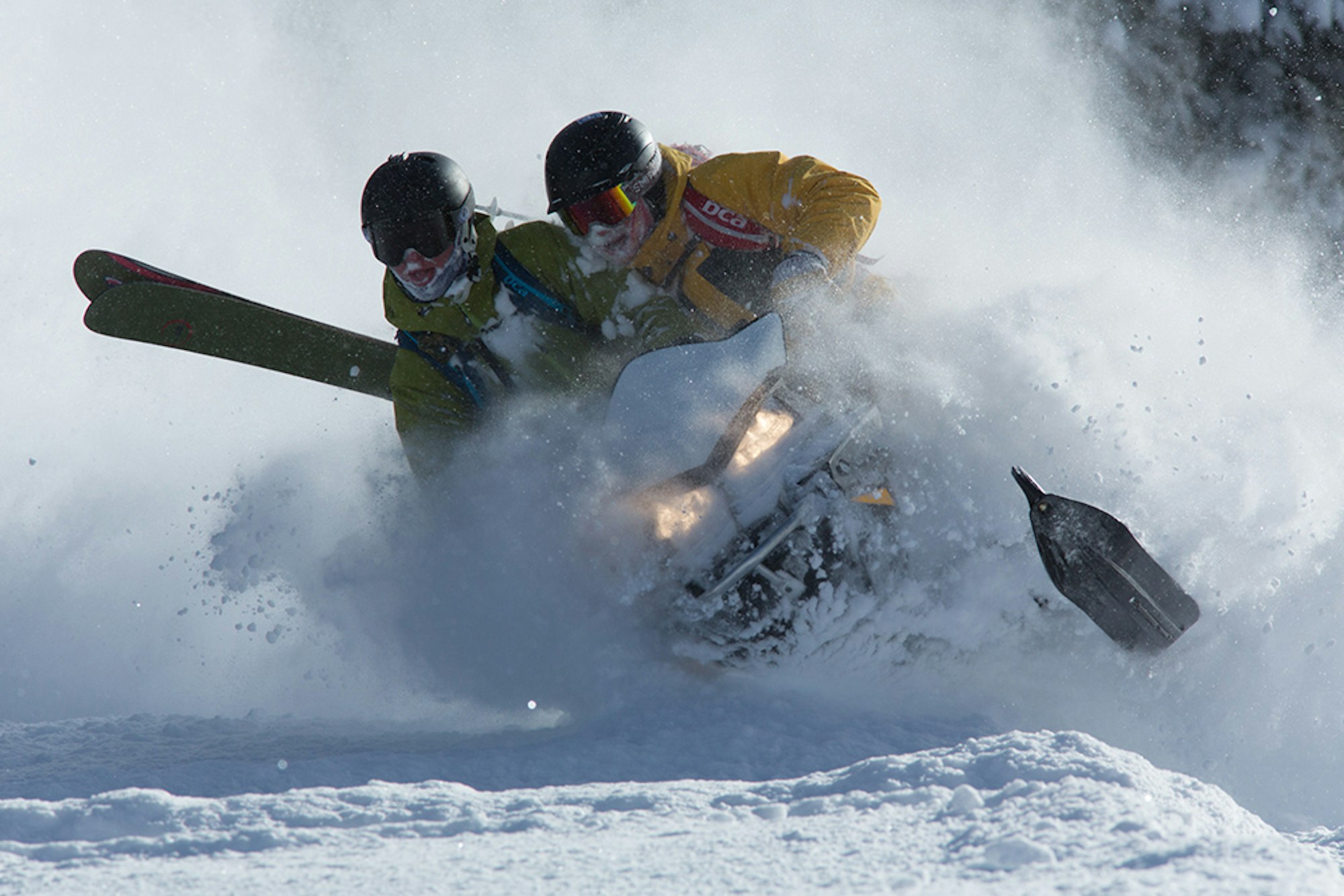
Parkin and Pete in Big Sky, Montana. Photo: Ryan Day Thompson
In the span of just two years, the 20-year-old wunderkind established himself among the industry’s core as an elite big-mountain pro skier; so you’re forgiven for assuming Costain was created overnight in a lab by mad scientists looking to spawn the perfect freeride skiing specimen. His smooth, effortless approach to wild, untamed mountains certainly reflects that assumption. But to do that would be to ignore a nuanced backstory, one that reveals a young man with a personality rarely seen in the skiing world and a family that has been grooming him for this moment, seemingly since birth.
“Parkin was a little sponge as a kid, he just wanted to learn and absorb everything I had going on,” says Pete Costain, Parkin’s father. Pete didn’t have a typical nine-to-five professional lifestyle; semi-pro snowboarder, traveling ski journalist, pro mountain biker, gourmet food salesmen, dirt-hauling company owner, night-time resort groomer and mountain bike trail builder are all gigs held by the eternally young Montanan in his lifetime. He worked jobs that allowed him as much time as humanly possible in the mountains, specifically, the deep wilderness that marks Montana’s Flathead Valley. And when Parkin was born, his attitude was simple: bring the boy along.
“He used to ask questions as a kid… that were almost comically prescient and incredibly observational,” Pete says. “You know, he’s like seven years old and asking me where the wind had been blowing, what was happening with the snowpack. When your kid is asking you questions like that, obviously, I offered up the basic snow science I knew when I took him into the backcountry. At first, I thought he was destined to become a ski patroller. Then, the more he skied, I started to really recognize his true talent bubbling up.”
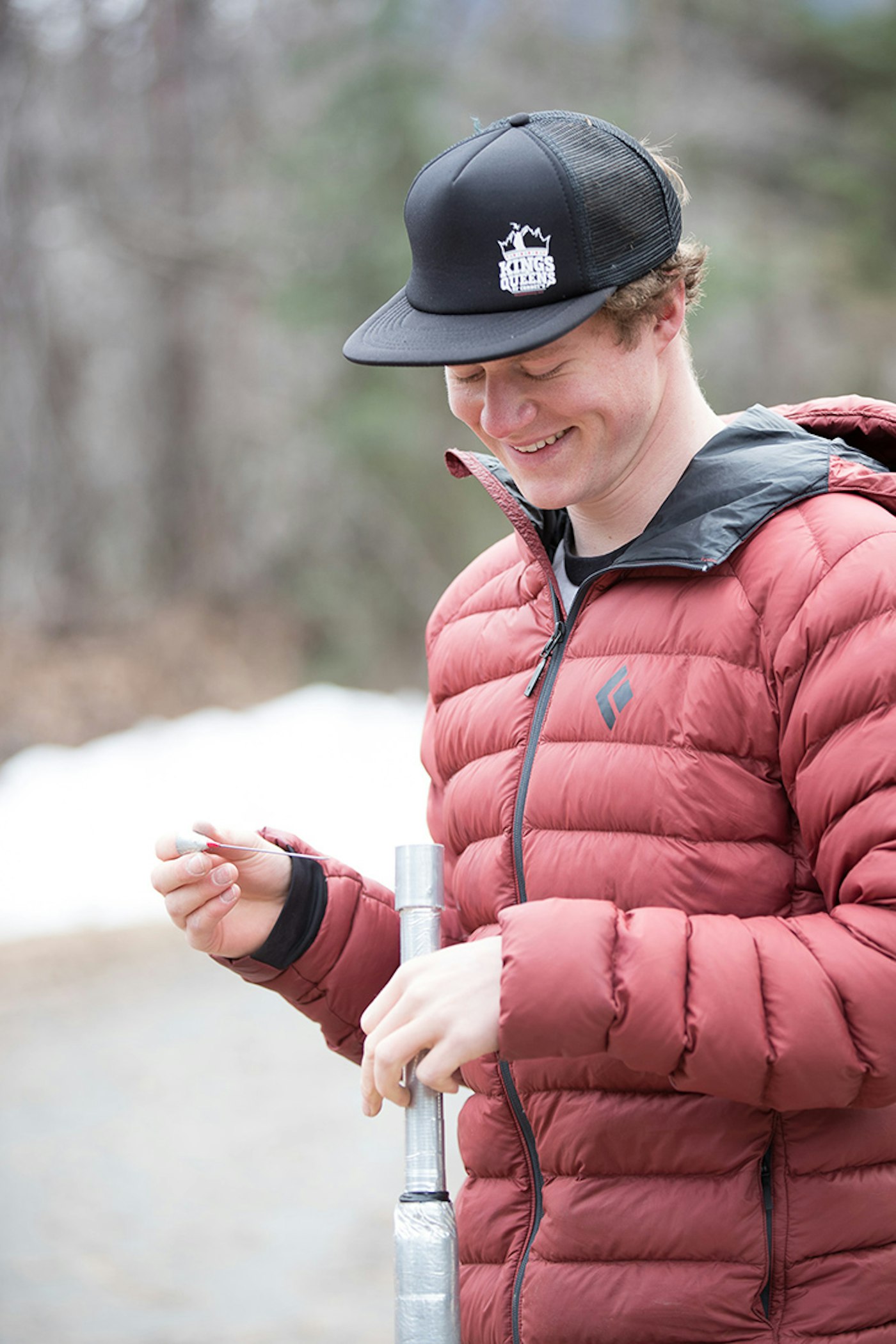
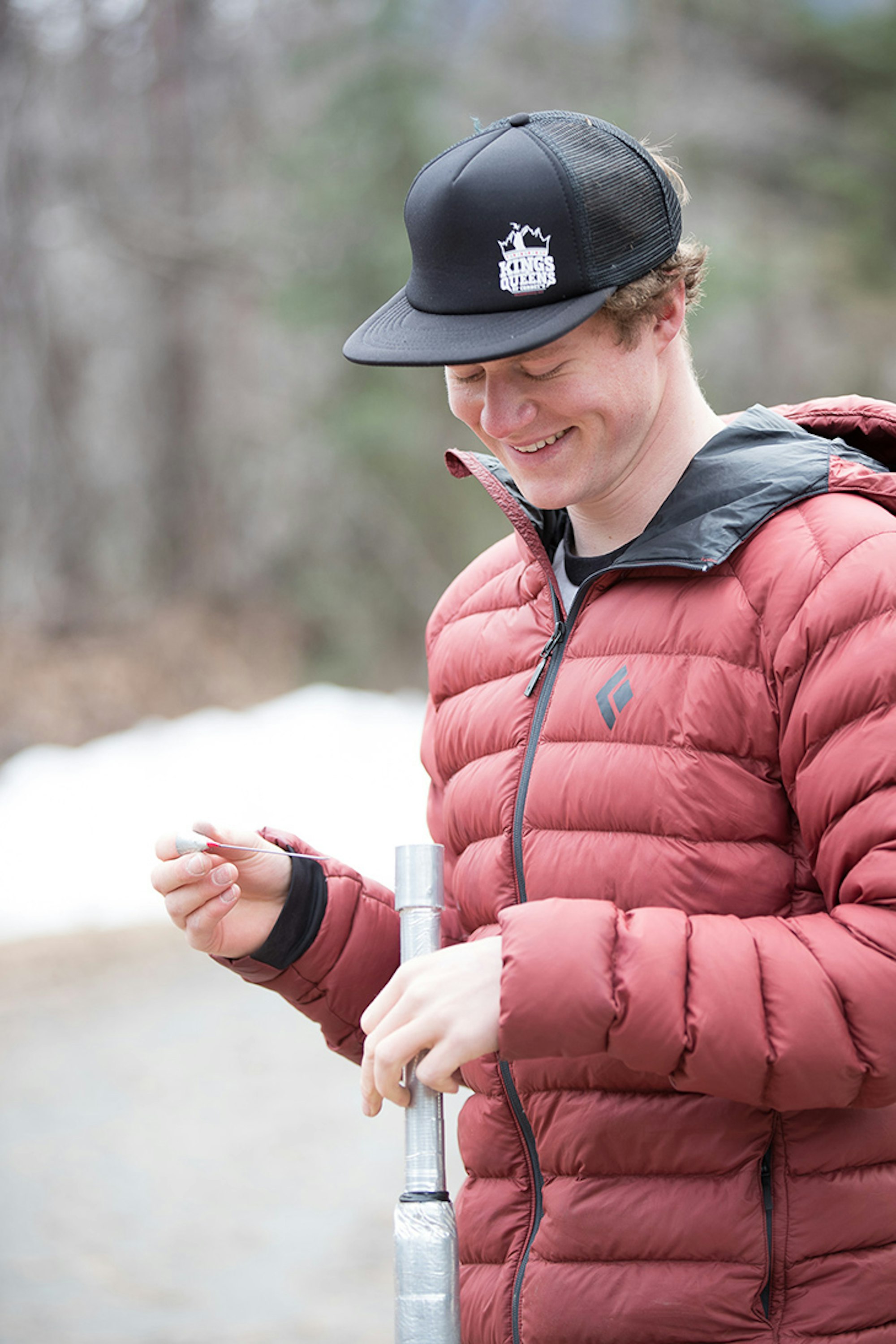
Costain on a down day in Alaska with SEABA Heli.
“My dad has always been my biggest influence,” says Costain. “Growing up, when people asked what pro I wanted to ski like, I never had answers for that. It’s always just been my dad.”
If the thought of a seven-year-old diving into the nuances of the winter snowpack seems a bit unrealistic, then you have to understand that Costain is built differently than other skiers.
Instead of playing neighborhood games of Wiffleball or tag, Costain spent his time interacting with and learning from the natural world, in addition to being homeschooled by his mother Linda.
“I have this really vivid memory, maybe it was in the fifth grade, of going out with my dad and helping him build community mountain bike trails at 6 a.m. before school for the day,” says Costain. “That’s when I realized, ‘Okay, this is probably something kids don’t normally get to do.’”
By the time Parkin was 10, he was challenging his father’s ski buddies to liftline downhills. Before he could legally drive a car, Parkin would often spend entire days skinning 10-mile backcountry approaches with his dad to access some of the region’s more remote peaks—not a typical father-son activity.
At age 53, Pete looks like someone in his early 30s. He is an immensely skilled skier and mountain biker, and tough, too—the type of guy who considers a shattered pelvis just a minor athletic setback. Back in March 2018, Pete crushed his iliac crest when he got a little too intimate with some rocks while skiing Big Sky; he was back on snow by December of that year.
“Pete’s still got more energy for skiing than almost anyone I know,” says Steve Knox, founder of the Whitefish Freestyle Skiing team, in spring 2019. “He just got back into town the other day from a trail-building conference [near Fruita, Colorado]. He spent all night driving back from the conference and then decides to rent a backcountry hut. Pete calls up a couple of his buddies and bam! The morning after returning from a work trip he’s on a three-day hut trip.”
Maybe as a result of Pete’s laissez-faire child-rearing strategy that he terms “free-range parenting” or perhaps because of Parkin’s desire to mimic every aspect of his old man, another differentiating factor emerged in Parkin as a pro skier: An immense joie de vivre, as the French would put it. A willingness to ski–and love of skiing–in any conditions. Basically, a mentality at polar opposites with the notion of the jaded pro.
“What’s so amazing about Parkin is that he breaks the mold of the traditional skier,” says Nick Trimble, owner and operator of SEABA Heli Skiing in Alaska. “There’s nothing cocky or pretentious about him. He’s the most gentle, kind, sober, wonderful young man you’ll ever meet. A gentleman and a scholar–and that’s hard to find in skiing. Not only is he a total space alien on skis, but he has absolutely no baggage.”
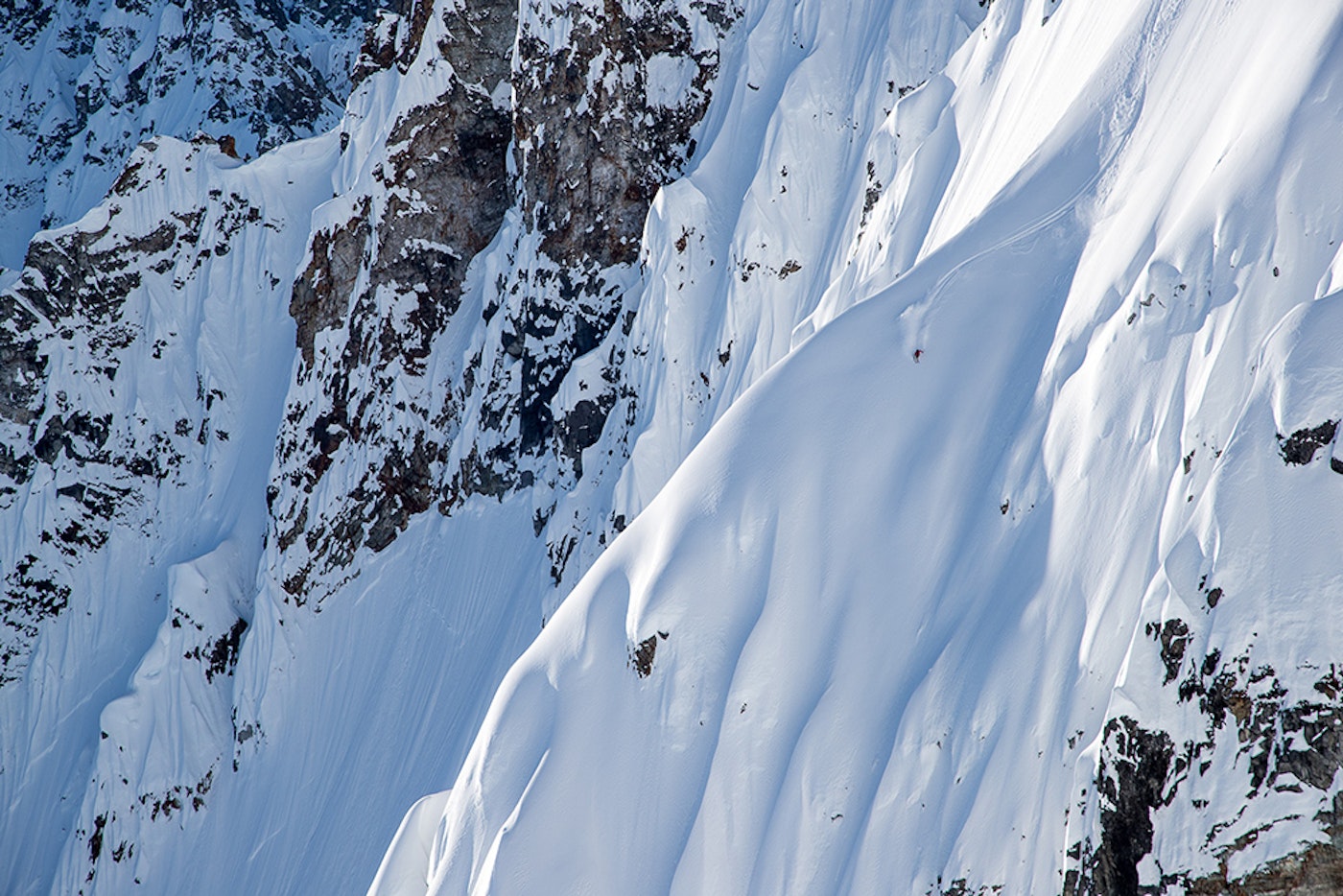
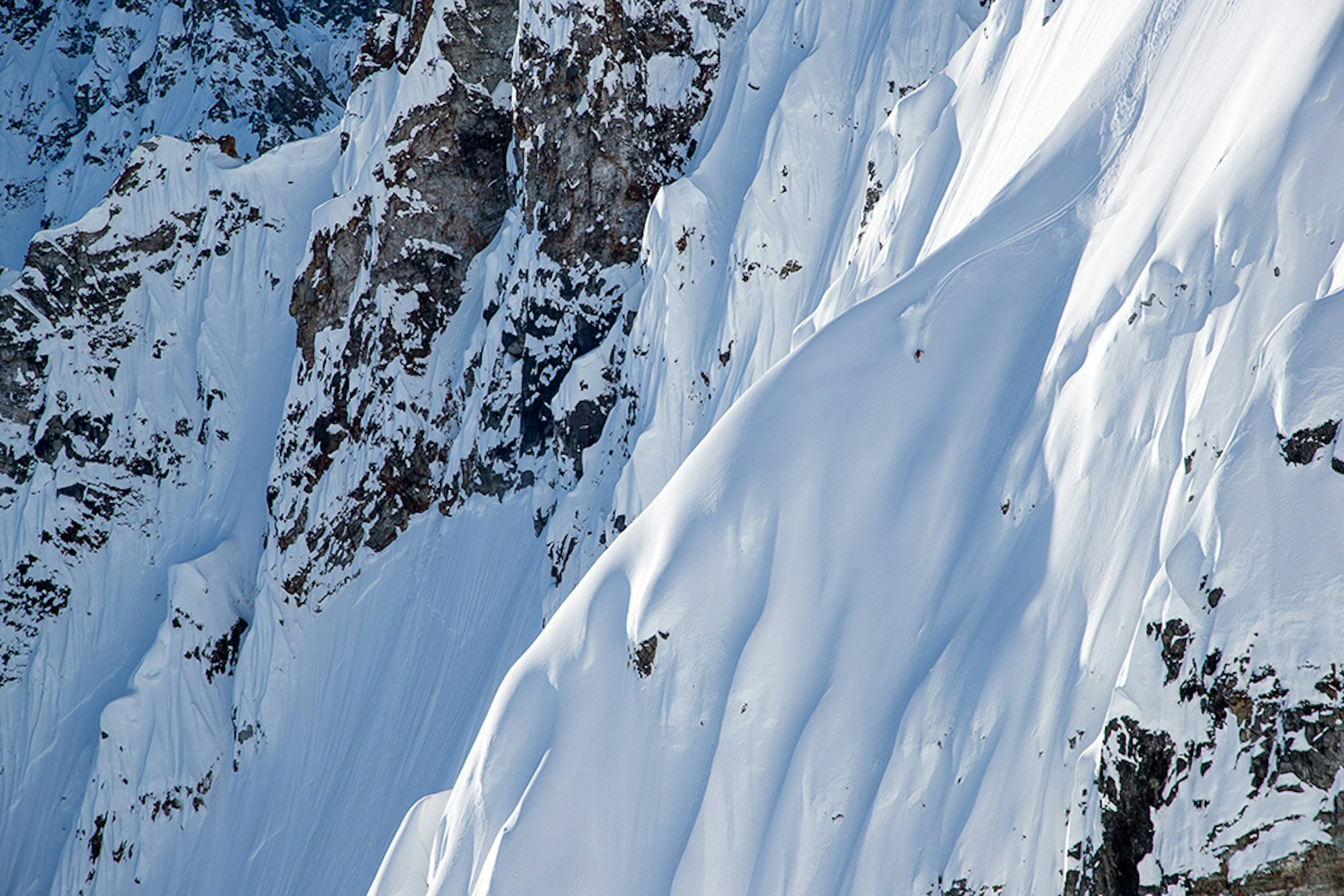
Costain at SEABA Heli in Alaska.
The scholarly aspect of Parkin’s skiing, per Trimble, is evident in how quickly he adapts to new conditions. For most every pro Trimble’s brought out to SEABA, there’s a drawn-out process to descending a new line. Riders study photos from varying angles, wait out weather windows and work up to skiing them. Trimble says that period of information gathering doesn’t exist for Parkin, and that outside of Travis Rice—widely regarded as the greatest snowboarder of a generation—he’s never met someone more proficient at eyeballing a new line, then riding it like a bat out of hell.
“The first year we shot Parkin he was 18 years old, and he came up to Haines and completely blew our minds,” said Trimble. “The conditions were terrible that year. All of the bigger-name pros would have backed off the lines he skied. Will Wissman is the most experienced photographer out here, and he flat-out said that he’s not sure he’s ever seen anyone ski Haines like that.”
Trimble, a Montana native himself, thinks that Parkin’s “ski any line, any time, anywhere” mentality is likely a result of his upbringing in Whitefish. Whitefish is a ski town that, according to Trimble, is built around three main pillars: “family, poor visibility and challenging conditions.” It may be that confluence of factors that explains how the relatively small community (population: 7,600) has become such a massive hotbed for snow sports talent—names like Travis Parker, Tanner Hall, Maggie Voisin, Adam Delorme and Micah Black, to name a few.
There’s a stunning amount of skiing ability produced from a mountain in a remote region that, ultimately, doesn’t quite carry the same international recognition as, say, Jackson or Squaw. And while it would be simple to draw parallels between those athletes and Parkin, none of them quite fit the same mold as him.
To start, Costain is sober. No booze, no weed, no blow; nothing. For an industry where partying is often ingrained in the culture—including many of the top athletes in the sport—that’s a rarity.
He’s also not into the machismo that pervades much of skiing. Costain is cerebral and measured in his approach to everything. You won’t catch him arguing with others at a bar about who went bigger that day, conversations that seem to permeate many a mountain town.
That’s not to say that Costain’s completely an old soul. His youthful zeal is still evident in many facets of his behavior. Trimble says he’s never seen Costain sit still and often finds him, on Alaskan down days, tinkering on MacGyver-esque inventions like handmade bullwhips or “his own brand of gunpowder to go blow something up.” Wissman says he’s never seen somebody eat as much as Costain does, and that SEABA often struggles to keep food pantries stocked when he comes to shoot. Knox recalled when, a few seasons ago, a surprise early-September snowstorm left a few inches on the top of Whitefish Mountain and Costain happily slapped on his skis to ride the lifts up with the mountain bikers on the hill, then ski down through rocks to get his fix. Trimble and Knox ultimately credit that endless reserve of energy and stoke to him spending his entire youth parroting his father.
“There are amazing similarities between Parkin and Pete–their personalities, their skiing styles, the way they handle themselves in public,” says Knox. “He instilled this very analytical mindset in Parkin along with a desire to learn without being super flashy.”
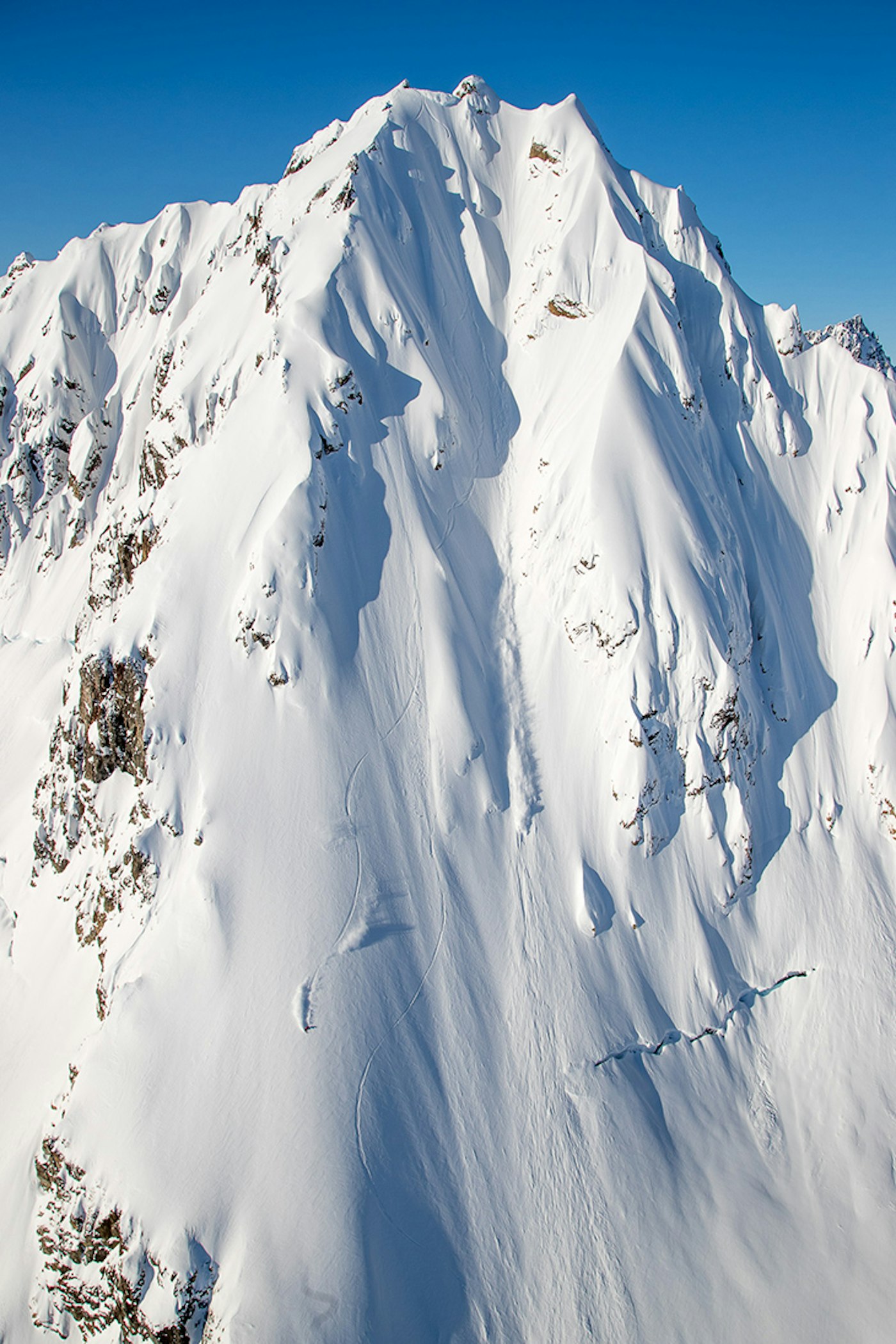
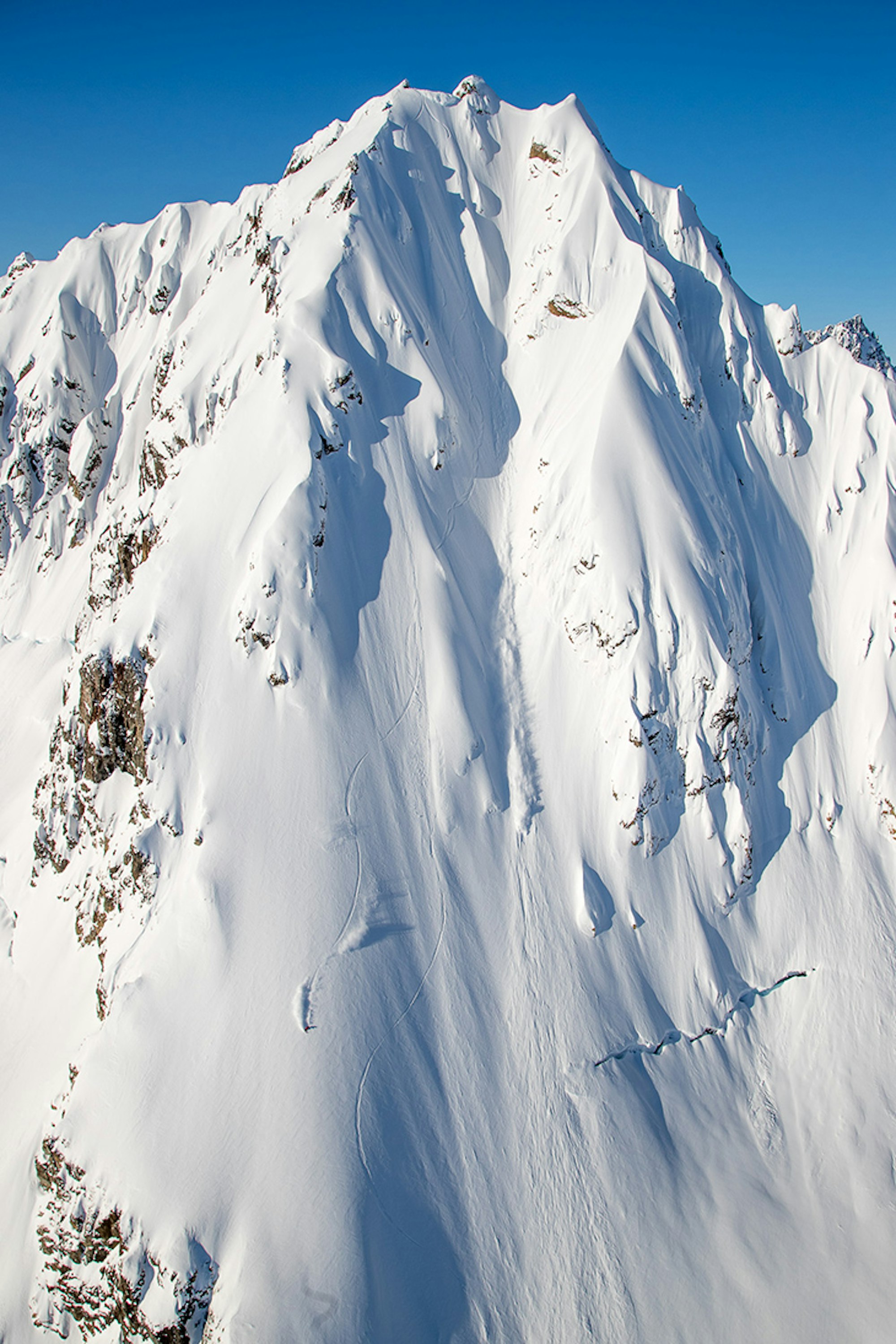
Costain descending a monstrous peak at SEABA Heli in Alaska.
And though Pete preaches the merits of free-range parenting, the reality is he was incredibly involved in every aspect of Costain’s life from day one. Pete claims he always treated Costain like one of his close ski buddies in town. However, most people wouldn’t spend every weekend of their ski season chauffeuring their friend countless miles between multiple states so they could win an IFSA national championship; or spend their hard-earned dinero on camera gear just so they could shoot and edit a season-long video to help a friend win the 2015 TGR Grom Contest. Ultimately, it would be hard to imagine a father more involved in the development of his son from the beginning.
“Parkin probably doesn’t remember this, but when he was tiny, I used to take him out in my backpack when I was scratching in the illegal singletrack trails I was building outside of Whitefish,” says Pete with a chuckle. “If Linda was at work, I was kinda like, ‘Eh, what the heck’ and would toss him and his brother on my back and etch in these sketchy little trails outside of Whitefish.”
“It’s always been that way with my dad,” Costain says. “He’s been a huge part of getting me to where I am, giving me guidance along the way and being just as passionate about skiing as I am. I think that’s why, now that I’m pro, I don’t really have the mindset of ‘Oh, you’re a pro skier. You have these sponsor obligations to go fulfill because your contract says so.’ I just look at it as doing what I like to do every day.”
When combined together, the full picture comes into focus of a young man–raised by a father with a bit of Peter Pan in him–in a small mountain town where the locals embrace the “free-range” mindset, often battle poor visibility and bitter cold to ski, but don’t see the point in bragging about it ad nauseum. It’s a picture of a precocious athlete–on the precipice of superstardom within his sport–who seems more interested in snow science and the art of the perfect backcountry kicker than international renown. A picture of a young professional more talented and mature than many of his peers, yet one who is still likely to be found jumping towering road gaps on his snowmobile during his down days. Ultimately, it’s a picture of a young man just taking life one day at a time, emulating his father while making a name for himself all his own.

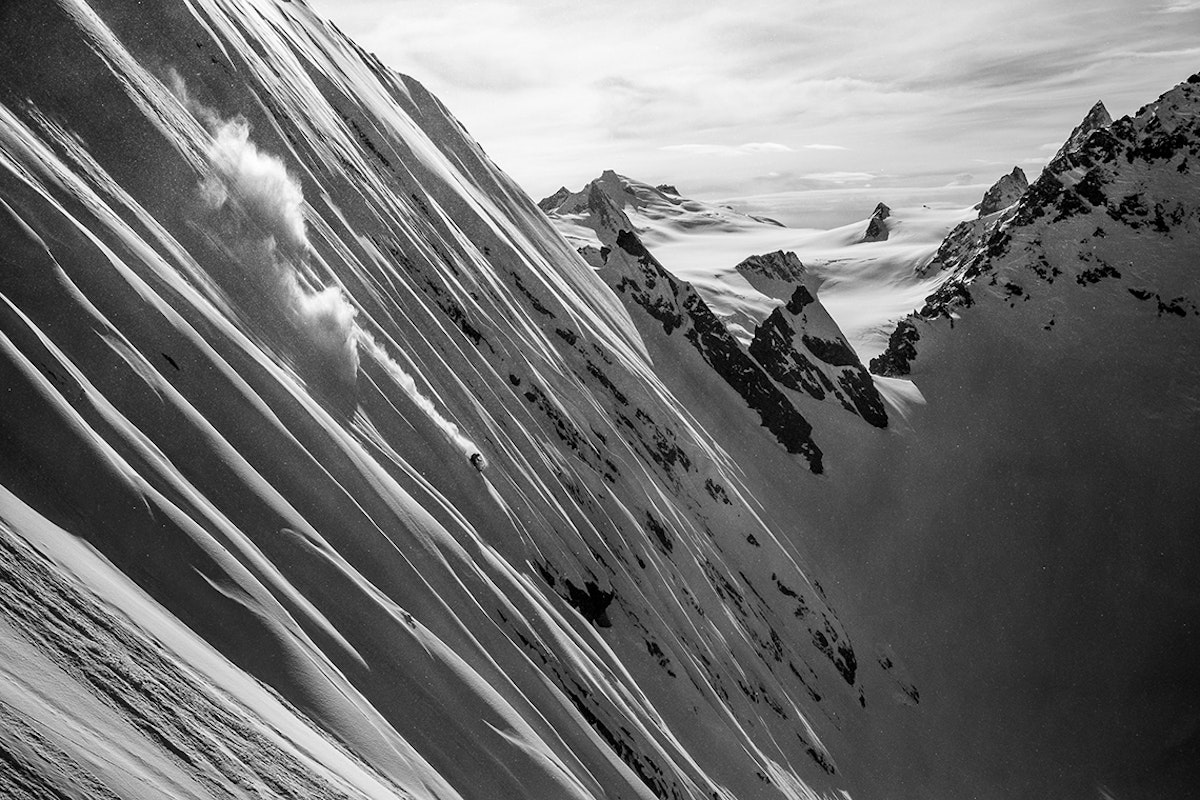

![[GIVEAWAY] Win a Head-to-Toe Ski Setup from IFSA](https://www.datocms-assets.com/163516/1765920344-ifsa.jpg?w=200&h=200&fit=crop)


![[GIVEAWAY] Win a Legendary Ski Trip with Icelantic's Road to the Rocks](https://www.datocms-assets.com/163516/1765233064-r2r26_freeskier_leaderboard1.jpg?auto=format&w=400&h=300&fit=crop&crop=faces,entropy)




![[GIVEAWAY] Win a Head-to-Toe Ski Setup from IFSA](https://www.datocms-assets.com/163516/1765920344-ifsa.jpg?auto=format&w=400&h=300&fit=crop&crop=faces,entropy)


